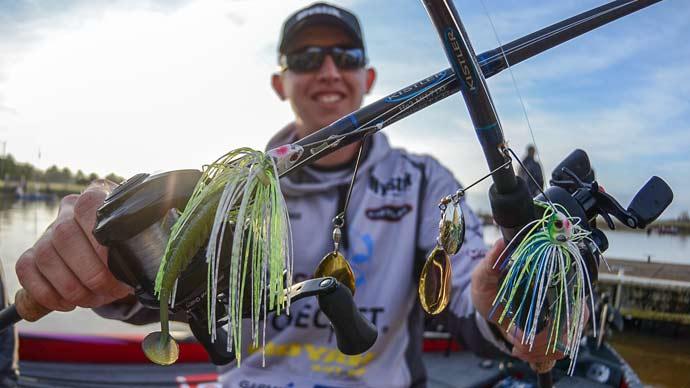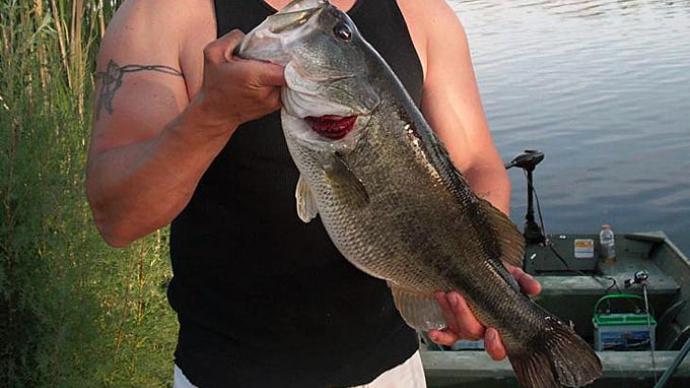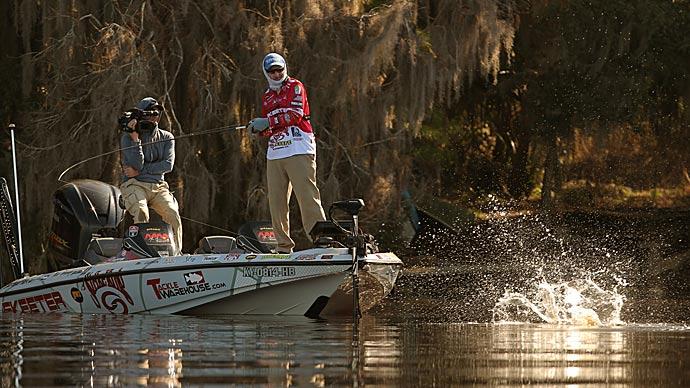
When you get on the water in the early season, what is the first bait you have tied onto your line? I can't tell you how many times I would start the bass season with a jig. I thought the bass wouldn't be in a chasing mood with water temps in the high 40s to low 50s, but that has all changed. One year I don't know why I had a spinnerbait tied on, and that was the rod that I grabbed with a surface water temp of 48 degrees that first morning on the water. I was fishing an area close to the landing that was about 5ft deep with weed growth up to 3ft, so there weren't many areas to fish.
I grabbed my rod and started to cast out a 3/8oz double willow spinnerbait. Within ten casts, I had three bass in the boat. As I was fishing down the bank, all I could do was scratch my head and ask myself what was happening here? This was not supposed to work like this. I can tell you from experience that this is now how I have started my bass season for the last ten years running, and it's no fluke that this pattern has worked.
I live in Minnesota, so our bass season is closed from March 1st through the opening weekend for walleyes (2nd weekend in May). Then we have a catch-and-release bass season that starts that weekend until the statewide bass opener happens every year on Memorial Day weekend. I mainly fish in Wisconsin on any given year to get my early season bass fix, and water temps will generally range from 45 to 50 degrees at the opener.
Let me dig deeper into this early season bass spinnerbait connection a little more then I'll let you take it from there.
Spinnerbait Break Down
We can start by doing a general spinnerbait breakdown to better match your spinnerbaits to the water conditions you face when you're on the water.
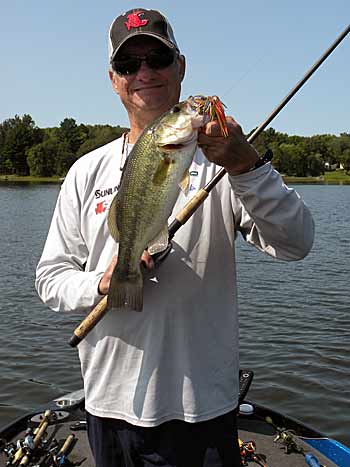
There are three main blade categories: Colorado, Indiana, and Willow for spinnerbait blades. Each blade has a different characteristic in how they act, so you can match that to the water conditions you're fishing in to get the most out of your spinnerbait.
Colorado Blades – When it comes to Colorado blades, these round-shaped blades will put off more sound in the water and have the most lift, making it hard to keep your spinnerbait at a certain depth because of the Colorado blade's lift. You can counteract this lift by boosting the head size or downsizing the blade to get the needed results. These are the preferred blade choice when fishing in stained/dirty water because of their sound, making it easier for the bass to find your spinnerbait. I'll also use Colorado-bladed spinnerbaits if the bass are buried up in the cover. Fishing the bait right above the cover many times will result in bass coming up to meet the bait as it goes overhead.
Indiana Blades – Indiana blades are next in line. Indiana blades are not as round as Colorado blades they are more teardrop shape. They don't put off as much sound/vibration and don't have as much lift as Colorado’s blades, so they are a good substitute for Colorado blades when depth/sound is needed. They are a good choice in between the Colorado and Willow spinnerbait blades.
Willow Blades – When you still need flash but not as much sound or lift from your spinnerbait, willow blades will be the blade of choice. Willows deliver more flash than other blades and provide little lift or sound, making them top blade choices when fishing clearwater or deep water situations.
Blade Colors - Blade color is essential when fishing spinnerbaits. It allows you to adjust blade colors on the water as to what water clarity conditions you're faced with fishing on any given day. I always carry nickel, gold, white, chartreuse, and orange in all three blade shapes.
Spinnerbait Combinations - I usually don't carry a high number of spinnerbaits with me, and I also don't buy many pre-made spinnerbaits anymore because of the cost and weight it takes to carry a good variety that you may want to fish with you in the boat.
I'll grab a few different sizes and carry about four of each size 3/8oz, 1/2oz, 3/4oz, and 1oz. I'll add the blade choice to the wire when on the water. When fishing double-bladed spinnerbaits, I will make up a few that have a first blade equipped with either a Willow or an Indiana blade, and then I can add the second blade when the time comes. This allows me to make quick changes on the water according to the water and bite conditions I'm fishing that day.
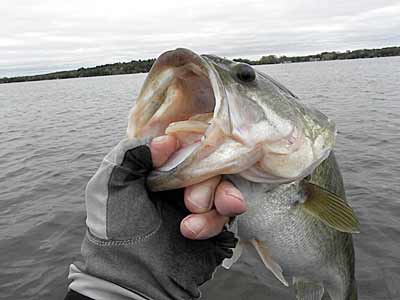
Skirts – Skirt makeup needs will change as you go from lake to lake so carry a variety of pre-made skirts in the boat and just put the skirt color on to match the water conditions you're fishing. This can often be a simple white, chartreuse combination or a brown with orange accents to match a crawfish pattern on an area lake. Same with skirts I carry to match the hatch colors of local baitfish and craws that I'm trying to imitate in the boat to make changes on the fly instead of carrying specific baits made up to these colors like in the past. Pick the skirt that is needed, slip it up on the head, grab a trailer put that on, and you're good to go. If I want to adjust, I just put on a new skirt, repeat the trailer, and fish in a few minutes.
Trailers – When picking a trailer, I always try to accomplish two things. One is action. Am I fishing a spinnerbait in waters that I need my trailer to have a lot of movement to help the bass find my bait? Examples of that trailer would be a swimbait or a grub trailer. A trailer with a lot of action will create some sound helping the bass find the spinnerbait in stained or dirty water conditions.
The second reason is color when fishing in clearwater conditions. I may use a bright-colored trailer to get the bait noticed. White and chartreuse fall in this category. The trailer action may not put off much action, but the trailer color stands out in helping to get the bait noticed. Just as you're matching the makeup of your spinnerbait when it comes to blades and skirt, make that same consideration when picking a trailer for your spinnerbait as well.
Trailer Hooks – Some anglers like to add a trailer hook to their spinnerbait. I have never been a big fan. I have made adjustments to my equipment and line choices. I don't have many times that the bass are short-striking the spinnerbait. I'm also afraid of the bass taking the trailer hook down in the throat so far that I would be doing more damage than good at releasing that bass unharmed.
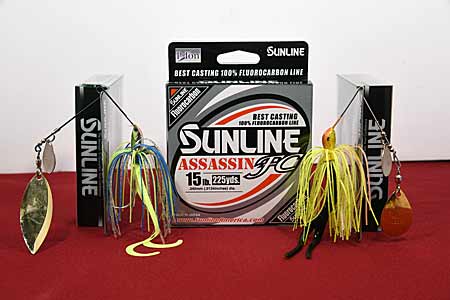
Equipment - When it comes to fishing spinnerbaits, I have a few different choices for equipment. If I'm fishing cover along the bank or throwing at targets, I'll choose to use a 7’ to 7’2” baitcaster that I match with a Lew’s BB-1 reel in 5-1:1 reel speed. On this reel, I'll spool 15lb Sunline Assassin FC. I want to use a shorter rod choice to hit the targets that I'm trying to fish easier. I use a short roll cast to hit these targets. I'm using a Denali Attax (AC723F) MH.
When it comes to fishing open weed flat areas or deeper weeds, I'll elect to use a 7’4” Attax (AC7002GC) MH glass cranking rod to 7’6” Denali Kovert (KW763CB) MH rod. In these situations, I favor a longer rod to get a farther cast, and it will be easier to pick up added line with this rod choice.
For a specific reason, let me explain why I'm using the cranking rods. I want the rod when I'm fishing spinnerbaits to have a little give in action, so I don't set the hook too soon and pull the spinnerbait away from the bass in the process.
The sensitivity I sacrificed for the bite detection in the rod power that I'm using will be made up of the characteristics of Sunline Assassin FC's low stretch qualities. I'm allowing the bass to get the bait in their mouth better before setting the hook resulting in more direct hookups in the long run and a day-to-day basis turning more strikes into bass over the side of the boat.
I hope this will help you this season when you grab a spinnerbait. Spinnerbaits have been around for a long time in the fishing world, but you can tell by the longevity of a bait just how well it works. When it comes to spinnerbaits, it was probably one of the first baits you put in your tackle box when you started bass fishing, and it's still one of the first baits you grab when you're on the water to put bass over the side of your boat. The catching power of a spinnerbait could not be said any better.


